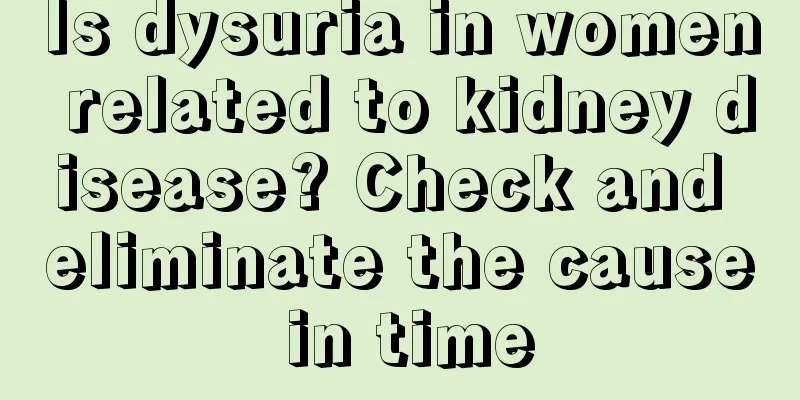Inguinal hernia is not to be feared, scientific treatment is the key! A complete guide before and after surgery

|
Author: Zhao Xuefei, attending physician, Beijing Chaoyang Hospital, Capital Medical University Reviewer: Shin Youngmo, Chief Physician, Beijing Chaoyang Hospital, Capital Medical University As a common surgical disease, the incidence of inguinal hernia is gradually increasing with the aging of the population, which brings many inconveniences to patients' daily lives. However, patients and their families often lack in-depth understanding of it, which leads to unnecessary worries and misunderstandings. Let us now have a comprehensive understanding of inguinal hernia, including its treatment methods, preoperative preparations, and postoperative care, to help patients make appropriate choices and judgments when facing this disease. Inguinal hernia refers to a disease in which organs or tissues in the abdominal cavity protrude outward through weak or defective parts of the groin area. According to different pathological characteristics, inguinal hernia can be divided into direct hernia, indirect hernia and femoral hernia. Although they are all inguinal hernias, they have their own characteristics in terms of high-risk populations and clinical manifestations. For example, direct hernias are more common in older men, usually caused by the gradual thinning of the transverse abdominal fascia; indirect hernias are common in young people, especially men, and are mostly caused by congenital developmental abnormalities; femoral hernias occur more often in middle-aged and elderly women, especially those who have experienced multiple pregnancies, because the expansion of the pelvis during childbirth exacerbates the weakness below the inguinal ligament. Early detection and treatment of inguinal hernia is crucial. Once symptoms are detected, you should go to a regular hospital immediately, and treatment measures should be taken as soon as possible after the diagnosis is confirmed. Although the three types of hernias differ in clinical characteristics, there is no essential difference in their treatment methods, which mainly rely on surgical repair. However, femoral hernia is more serious due to its higher incarceration rate, and patients should seek medical attention in time to avoid more serious complications. Figure 1 Original copyright image, no permission to reprint The treatment methods for inguinal hernia mainly include conservative treatment and surgical treatment. However, it should be made clear that conservative treatments such as hernia belts can only temporarily relieve symptoms and cannot cure the disease. Therefore, if the patient's condition permits, surgical treatment is the first choice. The surgical method can be divided into open surgery and laparoscopic surgery according to the different conditions, using local anesthesia and general anesthesia respectively. For patients who are preparing to undergo surgery, a comprehensive examination should be conducted before the operation, including heart, respiratory system, blood drawing and biochemical indicators, to ensure the safety of the operation. Patients need to complete the hospitalization procedures and relevant examinations on the day before to ensure that the operation can proceed smoothly on the day of surgery. It is worth mentioning that most modern inguinal hernia surgeries adopt the day surgery model, that is, the patient completes the surgery and is discharged on the same day. This model not only improves the hospital's bed turnover rate, but also greatly reduces the patient's hospitalization time and financial burden. Whether it is open surgery or laparoscopic surgery, patients can recover in a short time and return to normal life, which greatly reduces the physical and psychological burden on patients. After inguinal hernia surgery, patients need to pay attention to postoperative care and recovery. First, patients should follow the doctor's instructions to control the amount of activity after surgery. It is generally recommended to avoid heavy physical activities within one month after surgery to promote the healing of the wound and patch. Local swelling, effusion and other normal phenomena may occur after surgery, which will generally be absorbed by themselves within a period of time. If symptoms such as abnormal swelling or pain occur, you should seek medical attention in time. Figure 2 Original copyright image, no permission to reprint In addition, patients should keep the wound clean and dry to avoid infection. A follow-up examination should be conducted one week after surgery to observe the wound recovery and follow the doctor's advice on bathing, activities, etc. For patients from other places or patients who are inconvenient to come to the hospital for follow-up examinations, modern medical media platforms can be used for remote consultation and follow-up. In terms of postoperative diet, patients generally do not need to avoid any particular foods, but they need to adjust according to their own conditions. Patients who undergo laparoscopic surgery may experience slight abdominal distension in the early postoperative period, but the symptoms will gradually disappear as the gas is discharged and intestinal function recovers. In short, patients should follow the doctor's instructions for care and recovery after surgery to ensure the effectiveness of the surgery and their health. |
Recommend
Can I get eyebrow tattoo during menstruation?
Women have their menstrual period for a few days ...
What kind of bathroom shower is good? What kind of bathroom shower is good?
We all know that shower heads are a common type o...
What causes lumbar pain in women
Many people will experience lumbar pain in their ...
What causes sagging skin?
Whether men or women, they will experience saggin...
Otitis media: the “killer” of hearing
Otitis media is an inflammation of the middle ear...
How to quickly enlarge breasts without rebound
In life, many women feel that their breasts are s...
38 weeks of pregnancy fetal abdominal circumference standard
The items for check-ups during different pregnanc...
How do ordinary families store red wine? Does red wine have a shelf life?
Generally speaking, people may think that the lon...
How should pregnant women with breech position sleep?
Once the fetus is in breech position, it means th...
8 major harms of anger to women
The pace of life is getting faster and faster, an...
How to treat menopause
For women, they not only have to take care of the...
What should you pay attention to in your diet during early pregnancy
For some pregnant mothers, they pay special atten...
Are negative ion sanitary napkins good?
Negative ions are a type of anion, and proper abs...
What are the causes of cervical erosion?
For women, reproductive organs such as the cervix...
The 5 most aggrieved moments of women in bed
A woman’s sexual grievance is her excessive infer...









